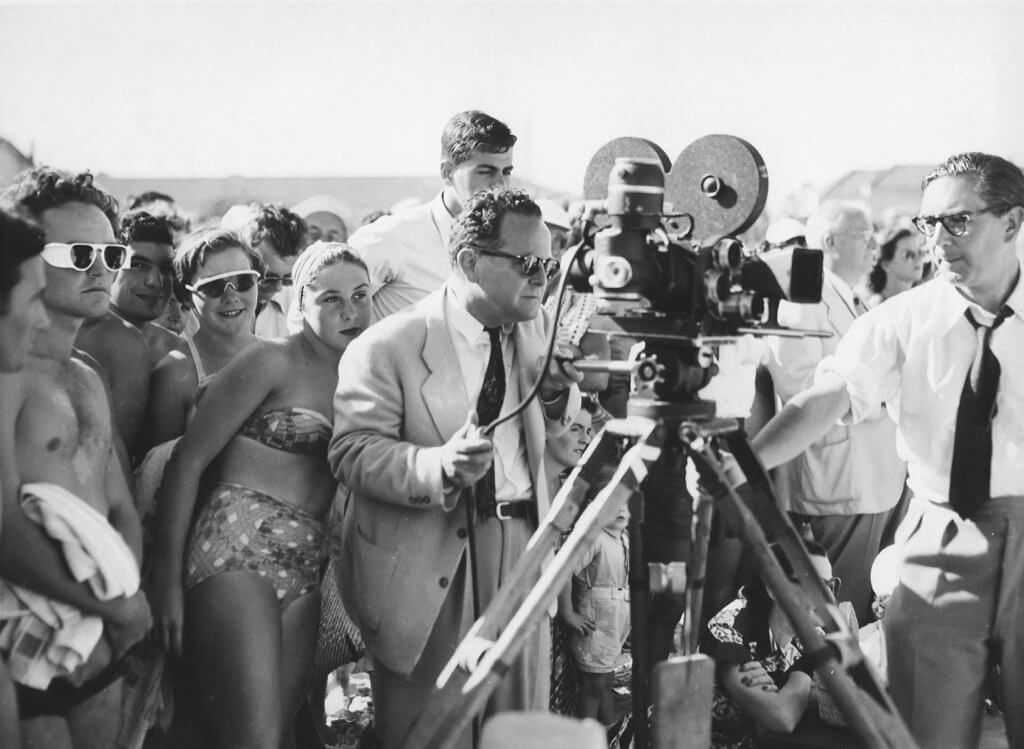Marcel Marceau stands as a luminary in the realm of miming, celebrated for his unparalleled contributions to entertainment during the latter half of the 20th century. Renowned for his artistry, he garnered prestigious honors, including the Ordre des Arts et des Lettres and the Legion d’honneur, while also achieving significant recognition as an Emmy Award winner. However, his impactful endeavors stretch beyond entertainment, reaching a pivotal juncture during World War II as a part of the French Resistance.
Born Marcel Mangel to Jewish parents in Strasbourg, France, on March 22, 1923, Marceau’s passion for the arts ignited early in his life. His first encounter with a Charlie Chaplin film at the tender age of five sparked an unyielding aspiration to pursue a career in filmmaking.
At 16, amidst the turmoil of wartime, Marcel and his brother relocated to Limoges after fleeing Strasbourg. Embracing his artistic talents, Marcel initially sought a career in painting but soon found a different calling within the French Resistance.
Recognizing his artistic prowess, the Resistance enlisted Marcel to forge vital documents, including Jewish identity papers aiding in escape from concentration camps and false identification cards to alter ages, sparing many from forced labor under the German army. Marcel’s resourcefulness extended to renaming himself and his brother Marceau, a tribute to a French Revolutionary General inspired by his readings of Les Misérables.
Marceau’s bravery extended beyond forging documents. Disguised as a Boy Scout leader, he orchestrated the flourishing smuggling of 70 Jewish children into Switzerland during the war’s waning days. He entertained the children through his pantomime talents, ensuring their safety amidst difficult circumstances.
Post-war, Marcel’s journey continued as he joined the French Army, leveraging his command of English to serve as a liaison officer with the US Third Army under General George S. Patton. His performances, primarily through pantomime, earned him acclaim among soldiers and positive reviews from publications like Stars and Stripes.
Tragically, Marcel learned of his father’s fate in Auschwitz upon returning to Strasbourg after the war. His pursuit of dramatic arts led him to the Sarah Bernhardt Theatre’s School in Paris, where he introduced one of his most iconic personas, Bip the Clown.
While Marceau’s filmography remains limited, his impact reverberates through notable roles, such as his appearance in Mel Brooks’s 1976 comedy “Silent Movie,” where his sole utterance of “non” carried ironic significance.
Marceau’s legacy lives on through his iconic performances, a testament to the power of mime as an art form that transcends cinematic portrayals. Despite his preference for silence, his influence and memorable statements resonate within art and performance.
Things You Should Know About Marcel
- Before honing his skills in mime, Marceau initially aspired to be a painter. His inclination toward visual arts remained influential throughout his life and performances.
- Marceau introduced innovative techniques in mime, notably the “walking against the wind” routine, where he mimicked the struggle against an invisible force—an act that became emblematic of his performances.
- Alongside his illustrious performing career, Marceau was a dedicated teacher, establishing his school, École Internationale de Mimodrame de Paris, to impart his mime techniques to aspiring artists.
- Marceau possessed a deep appreciation for literature. He translated several works of Shakespeare into mime performances, showcasing his versatility in interpreting and adapting literary classics into his silent art form.
- Beyond his wartime heroism, Marceau remained committed to humanitarian causes. He advocated for peace and was involved in various charitable activities.
- While primarily recognized for live performances, Marceau also appeared in several TV shows and films. He featured in a few dramatic roles, demonstrating his versatility beyond mime.
- Marceau’s influence extended to academic institutions worldwide. Many universities and performing arts schools continue to teach his techniques and philosophies on mime as part of their curriculum.
- Marceau collaborated with renowned musicians, integrating mime with music uniquely and innovatively, creating mesmerizing performances that blended visual artistry with musical compositions.
- In 2005, to honor his contributions to art and resistance during World War II, Marceau was featured in a graphic novel titled “The Great War: July 1, 1916: The First Day of the Battle of the Somme” by Joe Sacco.
- Apart from his mastery of mime, Marceau was proficient in multiple languages, facilitating his performances on an international stage and connecting with diverse audiences across the globe.
Lessons in Creativity and Resourcefulness
Marceau’s resourcefulness within the Resistance serves as a beacon of inspiration for modern-day activism. His ability to use his artistic talents, particularly mime, to forge documents and smuggle children to safety underscores the power of creativity in dire situations. It teaches us that unconventional approaches and creative thinking can be invaluable tools in resistance efforts in the face of adversity.
Marceau’s use of entertainment as a guise for his heroic acts sheds light on the role of art and performance in resistance movements. His ability to keep the children entertained during perilous journeys exemplifies how art can serve as a form of expression and a means to protect and uplift spirits in tumultuous times. This highlights the potential of entertainment and artistic expression to aid and empower resistance movements in the future.
Marceau’s unwavering commitment to his moral compass amid the horrors of war showcases the importance of moral resilience in resistance. His actions reflect a steadfast dedication to humanity, standing firm against oppression and injustice. This teaches us that unwavering courage and adherence to moral principles are crucial in the face of adversity, serving as pillars for future resistance movements.
You might contemplate the significance of transmitting such tales of courage to future generations. Sharing stories like Marceau’s not only preserves historical legacies but also instills values of bravery, resilience, and altruism in younger minds. This transmission of stories becomes a vital tool in shaping the consciousness of future activists and inspiring them toward impactful action.
Forging Documents and False Identities
Marceau’s mime skills became indispensable in forging documents crucial for the Resistance. Using his artistic talents, he meticulously recreated official papers, including Jewish identity documents and false identification cards. These lifelike forgeries enabled countless individuals to escape persecution and navigate difficult situations undetected, providing a lifeline for many seeking safety.
Guiding and Smuggling Children to Safety
Disguised as a Boy Scout leader, Marceau orchestrated the daring smuggling of Jewish children across the border to Switzerland. Through his mimed gestures and subtle cues, he led groups of children on treacherous journeys, evading detection and ensuring their safe passage to neutral territory. His ability to entertain and calm the children amidst danger proved instrumental in their successful escape.
Diverting Attention and Concealing Intent
Marceau’s performances served as effective distractions, diverting attention away from clandestine activities. His mime acts, whether in public or amidst sensitive operations, drew eyes away from suspicious activities, allowing clandestine operations to proceed undisturbed. His skillful use of gestures and expressions concealed the true intentions of Resistance activities, ensuring their success.
Nonverbal Communication and Covert Signaling
Through subtle gestures and nonverbal cues, Marceau communicated covertly with Resistance members. His mime acts were more than entertainment—they conveyed critical messages, signaled danger, or coordinated plans without arousing suspicion. This nonverbal language facilitated clandestine communication, which is crucial for organizing and executing Resistance operations.
Entertaining Troops and Boosting Morale
Marceau’s talents weren’t limited to clandestine activities. During his service with the US Third Army, he used mime to entertain troops and boost morale. His performances, devoid of words yet rich in emotion, provided respite from the harsh realities of war, lifting spirits and fostering camaraderie among soldiers.
Marcel Marceau’s passing in September 2007 marked the end of an era. His life stands as a testament to resilience, courage, and artistic brilliance, immortalizing his name in entertainment and the annals of wartime heroism.





